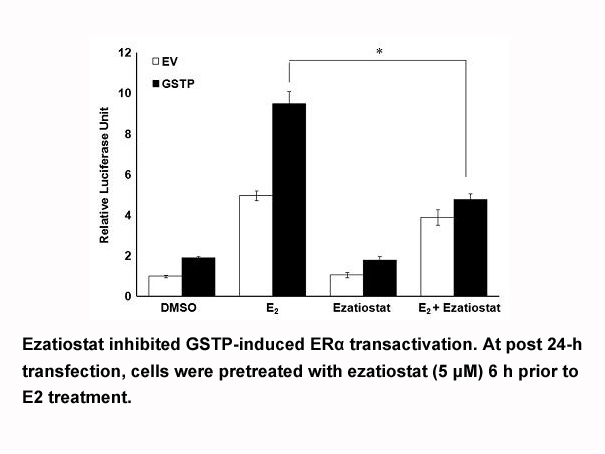Archives
MLN another selective Aurora A inhibitor is
MLN8237, another selective Aurora-A inhibitor is said to be more potent than MLN8054 and to cause less benzodiazepine-like side effects based on structure modulation by the addition of a methoxy group to either end of the MLN8054 molecule. It was studied [62] in a once daily (QD) schedule for 7 days in 21-day cycles. Twenty-three patients were enrolled evaluating dose levels of 5–150mg/day. A median of 2 cycles (range: 1–11+) were administered. At 150mg grade 3 neutropenia, grade 3 mucositis and grade 3 somnolence were seen. Other side effects included alopecia. Five patients showed clinical meaningful disease stabilization. Another study on MLN8237, using once daily dosing for 7 consecutive days in a 1-day Flubendazole was presented by Tabernero Caturla et al. [63]. Although preliminary, nine patients were included at 5, 80 and 150mg/day. Toxicities included mucositis, alopecia, neutropenia and somnolence. To reduce somnolence twice daily dosing will be evaluated in subsequent higher dose levels. Hints of antitumor activity were also observed using AZD1152 as a 2h infusion given weekly at different doses [64]. A total of 13 patients were included in this phase I study with given doses escalating from 100 to 450mg. Significant non-haematological toxicities have not been noted but grade 4 neutropenia, generally reversible in 2 weeks, was seen in three patients at a dose of 450mg and was considered the DLT. MTD was set at 300mg when administered i.v. during 2h in a weekly schedule. Pharmacokinetic analysis of the agent's active moiety AZD1152-HQPA in the first eight patients revealed a clearance of 22.4±1.03L/h and a low inter-patient variability (CV 5.7%) in a linear three compartment model.
PHA-739358, a selective inhibitor of Aurora kinases A and B, was studied concomitantly in two phase I studies exploring a 6 and 24h infusion schedule every 3 and 2 weeks, respectively.
In the first study 42 patients were included and dose levels varied from 45 to 400mg/m2. The recommended dose is 330mg/m2 administered over 6h [65]. While DLT's consisted of G3 neutropenia, grade 3 fatigue and grade 2 uncomplicated hypertension, no other grade ≥3 non-haematological toxicities were reported. Other grades 1 and 2 toxicities included nausea, anorexia diarrhea and fatigue. In one patient a rapid rise in blood pressure was seen during infusion. After cessation of infusion the blood pressure normalised to show a rapid increase after re-challenge. The hypertension was graded a grade 2 DLT due to strict blood pressure confinements during PHA-739358 infusion in the protocol. Using this protocol seven patients presented a disease stabilization, in three of whom the disease stabilization lasted more than 7 months.
In the second phase I dose escalation study [66], [67], using a 24h infusion in a 14-day cycle in patients with advanced/metastasised solid tumors, 40 patients were treated and 7 dose levels were explored (45–650mg/m2)[67]. 500mg/m2 was considered the MTD. DLT's were observed in six patients and consisted of grade 3/4 neutropenia, neutropenic infection and grade 4 mucositis. All other non-haematological toxicities were either grade 1 or 2 and consisted of fatigue, anorexia, nausea, vomiting, diarrhea, constipation, pyrexia and decrease in ejection fraction. When co-administering G-CSF, dose levels could be increased and 750mg/m2 is currently being expanded for MTD confirmation. In this study an impressive 46% of evaluable heavily pre-treated patients showed disease stabilization.
In both studies [65], [66], [67] skin biopsies were obtained for proof of concept evaluation of the agent under investigation. Inhibition of histone H3 phosphorylation could be observed in skin biopsies from patients given a dose of respectively 190 and 500mg/m2 onwards reflecting inhibition of Aurora-B kinase. In the pharmacokinetic analysis PHA-739358 clearance was 0.3–0.6L/h/kg with a terminal half-life of 17–29h.
Another compound that has entered clinical studies is the orally available Aurora-A and Aurora-B inhibitor AS703569 (R763). The drug was administered in a 21-day cycle using a modified Fibonacci scheme, assigning the patients to two different dosing regimens (regimen 1: dosing on days 1 and 8 or regimen 2: dosing on days 1–3) [68]. At the first dose level of regimens 1 and 2, no DLT's were seen. In dose level 2, six patients instead of three have been treated in regimen 1, due to a DLT, possible disease related. In regimen 2, three patients have been treated without signs of a DLT. Further dose escalation is ongoing and pharmacokinetic and pharmacodynamic  results have not yet been reported.
results have not yet been reported.